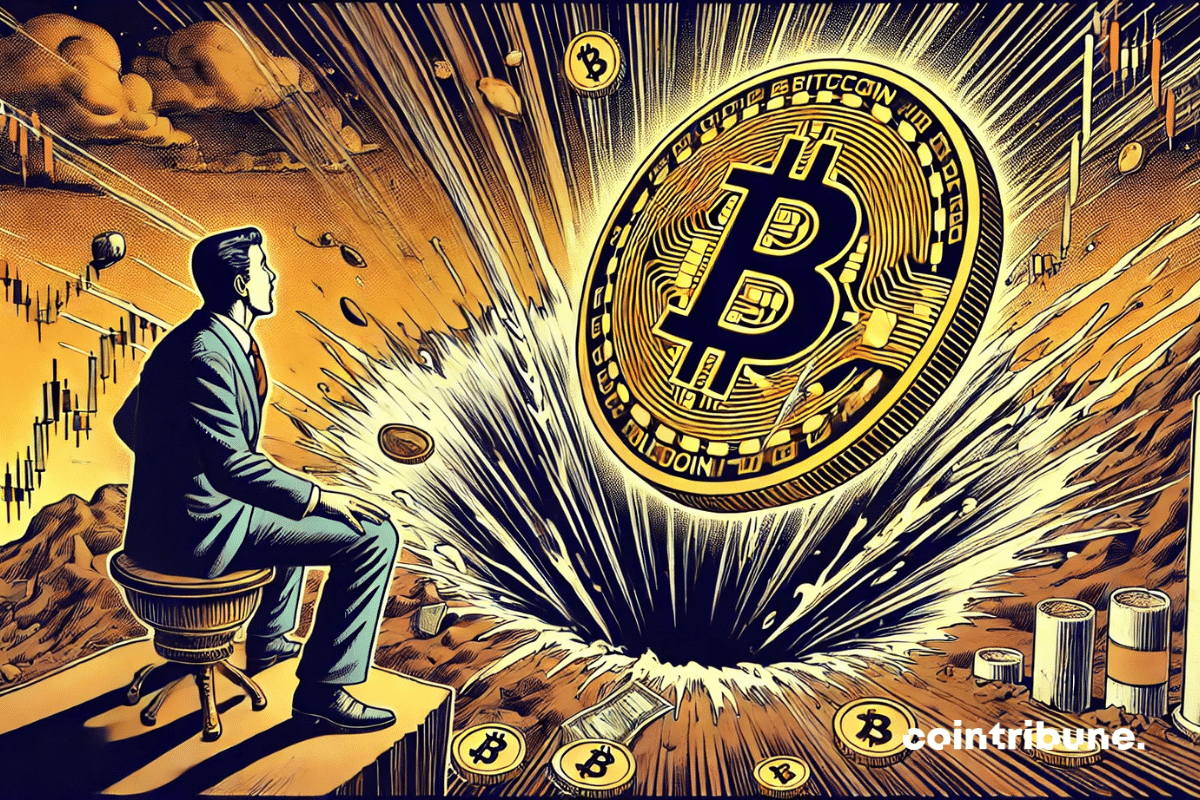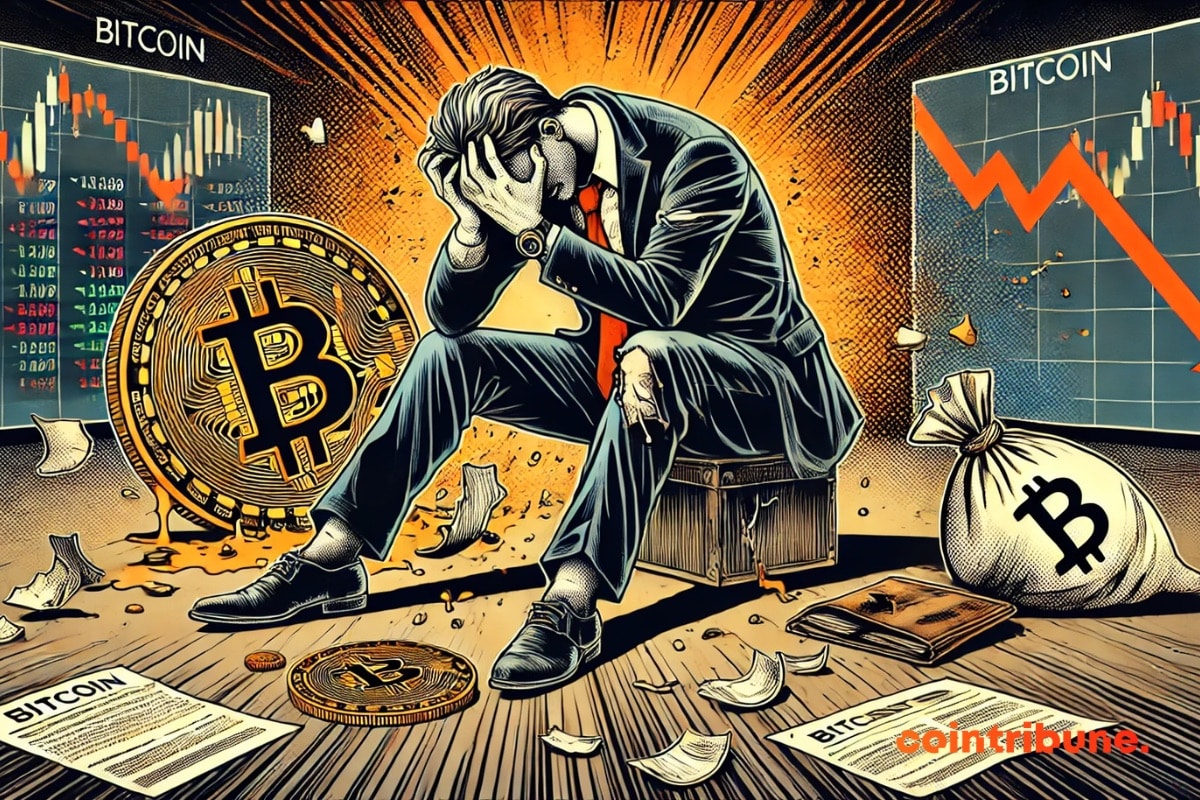A crypto whale bet $368 million against bitcoin, already raking in $2 million in profits despite enormous risk ahead of crucial Fed decisions this week.
Theme Bitcoin (BTC)
As the crypto market shows signs of consolidation, a recent analysis suggests that Bitcoin could reach $126,000 by June 2025. Currently, BTC is trading at the lower end of its historical seasonal range, but several indicators suggest a strong return of the bullish market and the achievement of a new ATH!
For several weeks now, bitcoin has been swaying. A drop of 22% from its historical peak at $109,000 in mid-January is fueling doubts. Is this the end of a four-year cycle, deeply embedded in the crypto market's DNA, or just a simple turbulence before a new surge? Analysts lean towards the latter option, but the nuances deserve to be explored.
Financial markets are wobbling, investors are worried, and cryptocurrencies are undergoing another unstable period. At the heart of this turmoil, one name keeps coming up: Donald Trump. According to several analysts and market observers, the American president is allegedly pursuing a strategy aimed at deliberately weakening financial markets in order to pressure the Federal Reserve (Fed) to lower interest rates. A hypothesis that, while dramatic, is based on public statements and concerning economic signals.
The crypto market is going through a turbulent period marked by a brutal correction of bitcoin and massive capital outflows. With a decline of over 18% from its historic peak of $106,000 in December 2024, some investors are already talking about the most painful cycle in bitcoin's history. However, for seasoned players in the industry, this scenario is nothing new. Even darker periods have marked the evolution of the crypto market, and many see this correction as a temporary adjustment rather than a lasting collapse.
As central banks around the world run out of steam in an endless race of monetary printing, François Asselineau, president of the UPR, proposes a radical shift: integrating 5 to 10% of Bitcoin into the reserves of the Bank of France. An idea that shakes traditional economic certainties and questions our relationship with sovereignty. Behind this proposal lies an undeniable observation: Bitcoin is not just a simple cryptocurrency, but a tool of resistance against the erosion of financial freedoms.
Bitcoin, fueled by post-election euphoria, reached a peak of $108,000 before falling below $80,000. Global economic instability and rising trade tensions contribute to increased volatility. Despite pro-crypto rhetoric, Donald Trump is adopting a protectionist policy that worries investors. Amid fears of recession and monetary uncertainty, the crypto market wavers in the face of macroeconomic turmoil.
Bitcoin is currently showing signs of recovery after a period of high volatility. Despite a 30% drop from its historic peak in January, the queen of crypto seems to be finding some stability. Several key factors are emerging, suggesting a return of BTC to $90,000 in the coming days.
For decades, the US dollar has dominated international trade and has established itself as an essential global reserve. However, this absolute reign is now challenged by the BRICS bloc. As a result, geopolitical tensions and the rise of cryptocurrencies are pushing several countries to seek alternatives to the greenback. Bitcoin and stablecoins are emerging as instruments capable of circumventing the supremacy of the dollar, but paradoxically, they could also reinforce its influence.
The crypto market is buzzing, traders are accumulating, stablecoins are soaring. A prelude to a bullish party or the swan song before an unexpected crash? The riddle persists.
As gold shatters its historical records by nearing $3,000 an ounce, Bitcoin wavers. The Bitcoin/gold ratio, a symbolic pillar for twelve years, has just broken its upward trend. An alarming signal for crypto enthusiasts? Amid geopolitical tensions, aggressive trade policies, and contrasting ETF flows, the financial landscape is fracturing. Is the reign of "digital gold" threatened by the renewed shine of the precious metal?
Crypto ETFs are crashing down like an uncontrollable wave. Avalanche joins the dance, but history has taught us that markets sometimes have a short memory... and a brutal correction.
Bitcoin continues to challenge traditional financial markets and generates increasing interest among investors. For several years, it has been compared to gold, often presented as its digital equivalent. But this time, Tom Lee, influential analyst and co-founder of Fundstrat, goes further and claims that Bitcoin will become the best-performing asset.
A wind of dissent is blowing over Washington. A legislator is directly confronting Donald Trump's initiative to create a strategic reserve of Bitcoin and other cryptocurrencies. For him, this project is nothing visionary: it is more of a dubious maneuver, built on unstable ground where private interests and public funds intertwine.
A wave of panic is sweeping through the bitcoin market. In just six weeks, short-term investors have lost over 100 million dollars, caught in a brutal correction. Should this be seen as a worrying signal or a disguised opportunity for savvy investors?
The traditional financial industry and the crypto sector continue to intersect, and every move of Wall Street giants is scrutinized closely. Indeed, the announcement of BlackRock's return to the bitcoin (BTC) market with a $25 million investment has not gone unnoticed.
Moscow is stepping up now that Washington has embraced bitcoin. Soon a Russian strategic reserve?
Bitcoin is going through a period of indecision. After reaching a peak of $109,000 in January 2025, its price dropped to $84,290, marking a correction of 23%. Some analysts believe that the leading cryptocurrency could enter a new 8-month consolidation phase, a pattern similar to what was observed in 2024. This hypothesis is based on several technical indicators and the behavior of institutional investors.
A tiny device challenging the monsters of Bitcoin mining, a chance worthy of a miracle, and there is a solitary miner pocketing $260,000 under the astonished gaze of the industry.
Bitcoin exchange-traded funds have maintained over 95% of their invested capital, despite a slowdown in inflows and a recent significant drop in price. This resilience, comparable to that of traditional stock ETFs, reflects a change in the behavior of crypto investors.
Ethereum in free fall against Bitcoin: mere turbulence or alarm signal? As the ETH/BTC ratio hits its lowest level in 5 years, some traders are fleeing to more profitable altcoins. Should we follow the trend or wait for a rebound? Discover the analyses and strategies to not miss the next crypto wave!
According to the latest financial statements made public, at least six members of Donald Trump's presidential cabinet hold investments in bitcoin, with a combined total value reaching several million dollars. This revelation aligns perfectly with the president's promise to make the United States the "global superpower of Bitcoin."
Larry Fink sounds the alarm: Bitcoin could lead to a major crisis. Discover his full analysis in this article!
The crypto market is undergoing a transitional phase, marked by Bitcoin consolidation and stagnation of altcoins. However, several technical indicators suggest that a trend reversal is on the horizon. The $425 billion threshold on the market capitalization of altcoins, which has long been a major obstacle, may soon give way, paving the way for a surge in alternative assets.
The United States is preparing to accumulate millions of bitcoins. Goal: to lighten the burden of debt.
Bitcoin strengthens its hegemony in the crypto market, reaching a dominance of 61.2% according to recent data. This rise confirms the weariness of the recent altcoin rally, weakened by macroeconomic volatility. In the face of an uncertain context, investors are refocusing on BTC, perceived as a safe haven.
In the arena of Bitcoin, the giants play at their discretion while the newcomers flee. Binance watches, powerless, this grand ball of decentralized finance. End of the game or just an intermission?
The financial systems encountered significant disturbances at the start of 2025 after President Donald Trump enacted extensive import tariffs affecting Canada, Mexico, and China. President Trump initiated the new trade regulations, which imposed 25% duties on products from Canada and Mexico and 10% duties on Chinese exports to safeguard domestic businesses and correct commercial discrepancies. The tariffs caused disruptive effects throughout world markets, particularly in the cryptocurrency industry.
As the U.S. Consumer Price Index (CPI) shows a slight decline in inflation, Bitcoin holds its breath. At 3.1%, the number is below expectations, but the king of crypto paradoxically plunges from $84,000 to $83,000 in just a few hours. A paradox? Not really. Between hopes for interest rate cuts and political maneuvering, the landscape is becoming more complex. An analysis of a scenario where Bitcoin, lying in wait, could surprise the markets.
The U.S. Securities and Exchange Commission (SEC) may soon abandon its initiative to require certain crypto companies to register as exchanges. Mark Uyeda, acting chairman of the SEC, has asked the agency's teams to explore ways to waive this regulatory change.





























